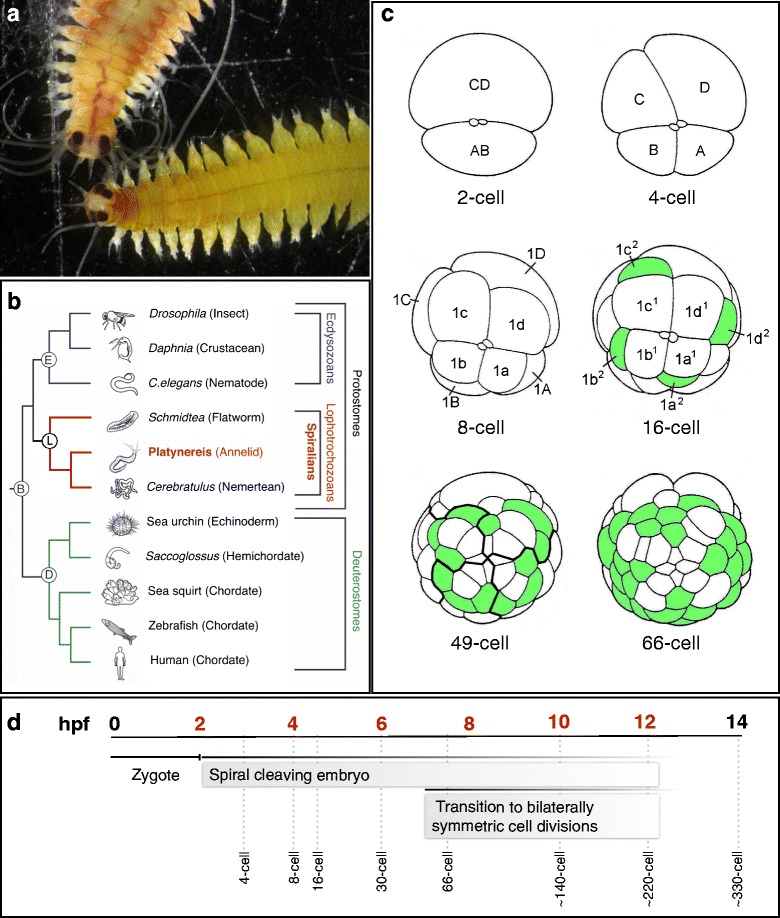Fig. 1.

Early development of the marine annelid Platynereis dumerilii. a Dorsal views of Platynereis adults showing the head and anterior segments of a male (top) and female (bottom). b Phylogenetic position of the spiralian annelid Platynereis dumerilii (highlighted in red). Bilaterally symmetric animals comprise of deuterostomes and protostomes. Within protostomes there are two clades, ecdysozoans and lophotrochozoans. Many lophotrochozoan phyla are spiralians. c Early spiral cleavage patterns in Platynereis. The first cleavage is highly asymmetric, giving rise to the AB cell and the much larger CD cell (2-cell). The second cleavage creates the macromeres a, b, c and d (4-cell). The third cleavage (8-cell) is the first cleavage along the animal/vegetal axis and marks the beginning of spiral cleavage. The animal-pole micromeres, denoted with lowercase letters, are shifted slightly clockwise with respect to their macromere sisters, denoted with uppercase letters. At the fourth cleavage (16-cell), animal-pole daughter cells are shifted counter-clockwise compared to their more vegetal sister cells. This spiral pattern of cell divisions continues throughout early embryogenesis and transitions in some cells to bilaterally symmetric cell divisions (66-cell). Cells depicted in green will form multi-ciliated cells by 12 h of development. The four earlier stages show two small polar bodies at the animal pole. d The developmental timeline of Platynereis dumerilii from the zygote to the protrochophore. The first cleavage occurs around 2 h post fertilization (hpf) and the spiral cleavage pattern (described in c) continues throughout the first ~12 h of development. Platynereis transitions to a pattern of bilaterally symmetric cell divisions around 7hpf. The dashed lines show the approximate ages of various cell stages. The time points at which samples were collected for RNA-sequencing are in red
